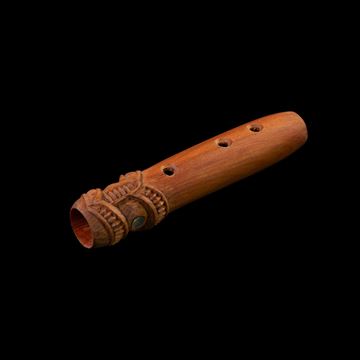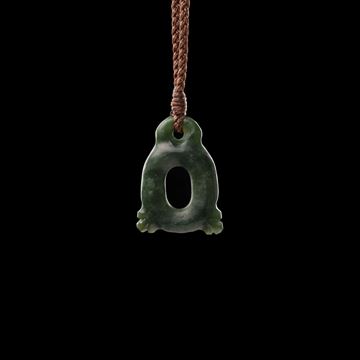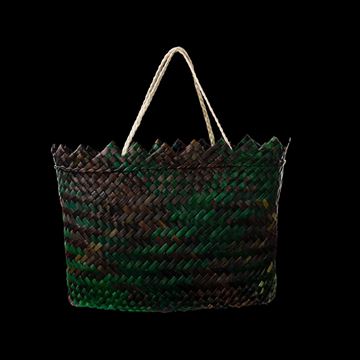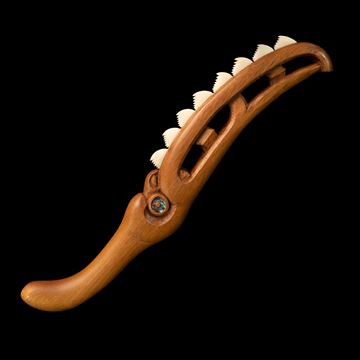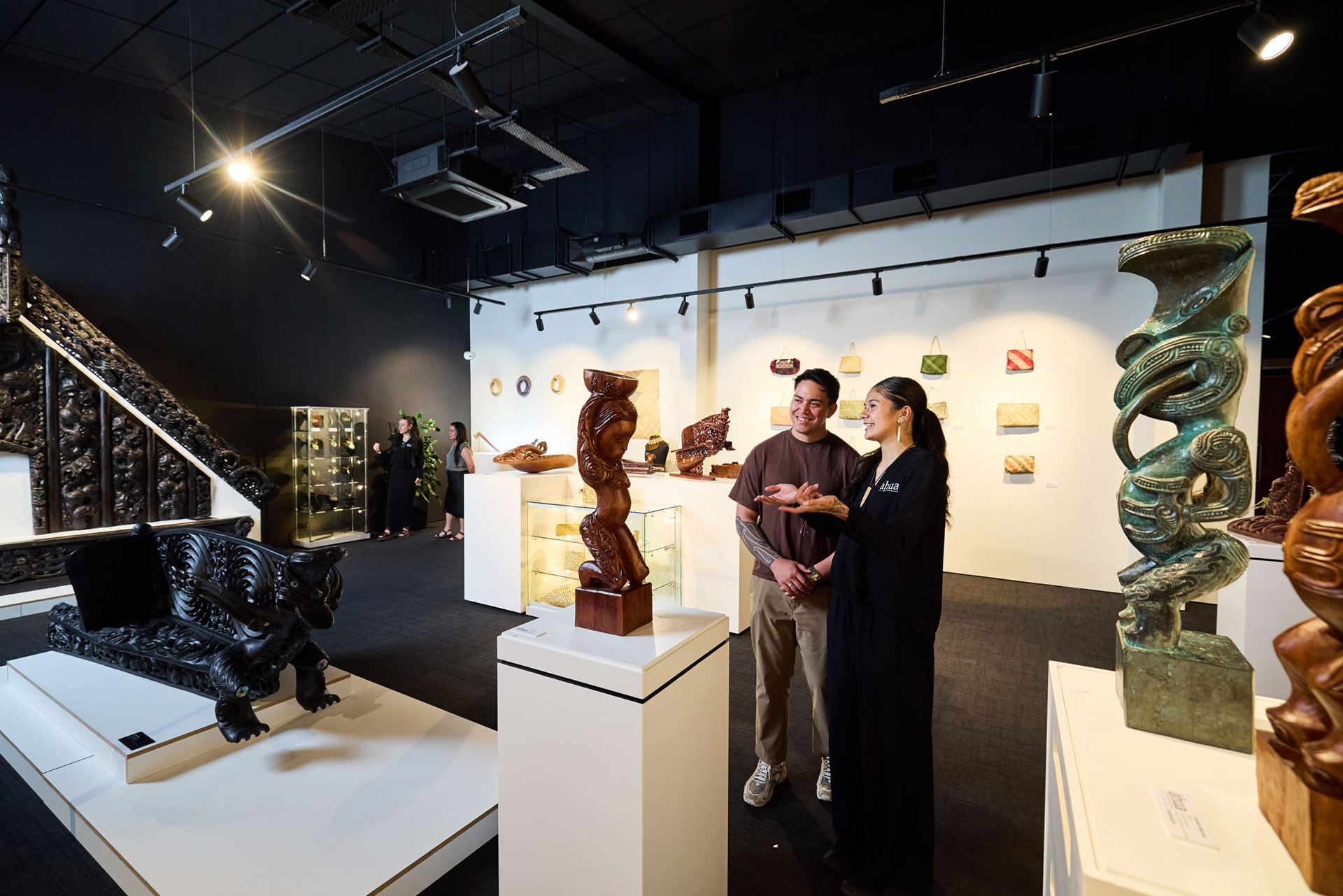
Āhua Gallery
Select Subcategory
Kōauau 5859HY
Kōauau are part of the flute family and come to us from the atua (spiritual entity) of flute music Hine Raukatauri. Kōauau is also the name for a species of hollow kelp, which can also be used to make instruments. Kōauau are made from a variety of different materials including wood, bone or sometimes stone. Most Kōauau have 3 wenewene (finger holes) although there are several older examples that have 4 or more. The kaiwhakangāwari is the wenewene closest to the mouth, the kaiwhakahī is the middle wenewene and the kaiwhakakaha is the wenewene closest to the distal end.
There are many uses for kōauau. In Māori tradition, birds are sometimes seen as important messengers from the spirit world. Kōauau have a reputation of attracting the native birds of Aotearoa. The birds will often interact with the beautiful melody from the kōauau, giving us a glimpse of the spiritual aspects of the kōauau song.
Material: Mataī (NZ Native)
Measurements: 123mm x 26mm x 26mm
$850.00
Pōria Kākā - 5497MA
Pōria Kākā are leg rings crafted from bone or stone used to keep pet kākā (parrots) from flying away. The giant kaka parrot was used by the Māori to assist them during hunting. The bird was used as a decoy to capture other kaka parrots.
As with many Māori items the kaka ring was both used as a tool as well as an adornment.
Material: Pounamu (Kawakawa)
Measurements: 35mm x 25mm x 4mm
$450.00
Kete Whakairo - 5826RW
Kete whakairo are woven flax bags of a finer quality than the general utilitarian kete. They are normally made from prepared strips of flax and/or kiekie, some of which have been dyed. Kete whakairo may also feature geometric designs.
Material: Harakeke
Measurements: 260mm x 210mm
$540.00
Māripi - CI3233
Māripi are a traditional meat cutting tool. They are fashioned with a wooden handle and sharks’ teeth carved from Kōiwi (beef bone) to create a serrated edge.
Material: Rātā, Kōiwi (Beef Bone) & Pāua (Abalone)
Measurements: 370mm x 60mm x 30mm
$3,500.00

